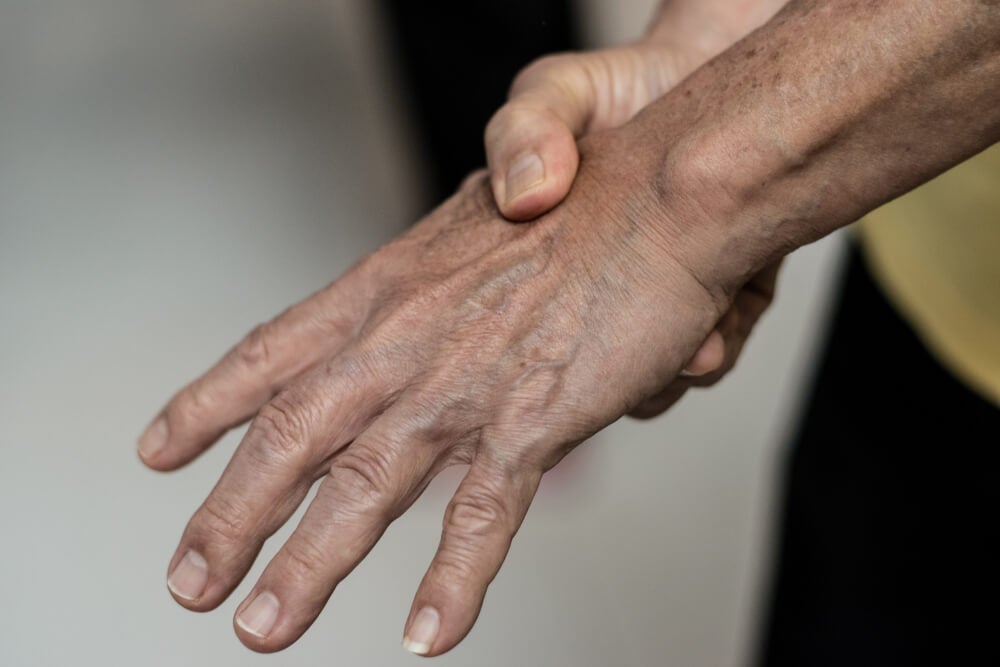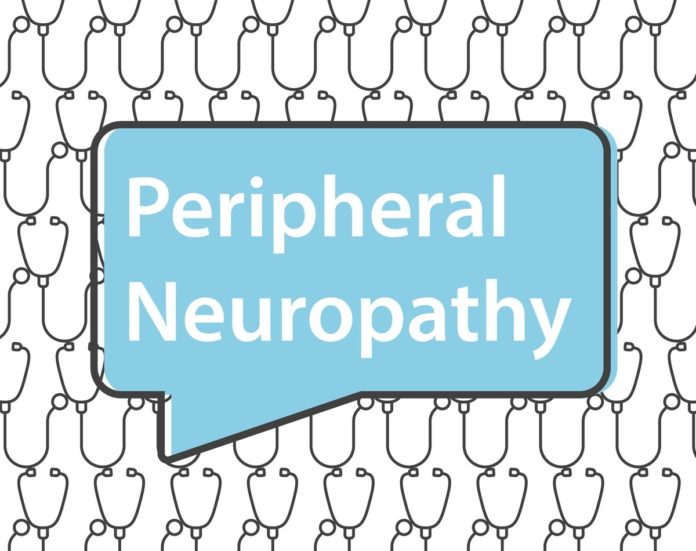The peripheral nervous system is the body’s sensory network. It includes nerve cells that carry messages between your brain, spinal cord, organs, tissues, and systems. When you feel pain or touch something hot or cold, your peripheral nerves are communicating that sensation to your brain.
When these types of communication go wrong with peripheral neuropathy, it can cause a wide variety of symptoms in different parts of the body. These might include pain with numbness in the hands or feet or muscle weakness in any part of the limb or leg on one side of the body only. The chance of feeling pain with slight touch is also increased when suffering from this disorder.
Another common cause of peripheral neuropathy is diabetes. Exercise for diabetes should be done under careful supervision by a physician because it could lead to high blood sugars that result in a diabetic coma or even death if not handled correctly. Exercise can help improve insulin sensitivity, which will decrease blood sugar and put less stress on your pancreas to produce more insulin throughout the day to regulate glucose levels since it becomes less efficient around mealtime after years of elevated blood sugars due to chronic uncontrolled type 1 or type 2 diabetes.
People with diabetes should always check their blood sugar before exercising to ensure it is not too high or too low. Treatment involves medications that are often not very effective at reducing pain because peripheral neuropathy does not have specific treatment plans. Exercise is often suggested as a way to improve the patient’s quality of life.
As exercise can stimulate the liver to release glycogen stores, a reduction in medications may be needed before starting a workout regimen. Exercise can also help decrease the risk of complications from neuropathy, such as hypertension and peripheral vascular disease.
As part of the exercise plan, people need to stretch their muscles daily because they are less likely to be sore if they do so after exercising or working out. Muscles that are tight or in spasm may cause more damage than good when stretched too far beyond their normal range of motion. Exercise can increase blood flow which will help them avoid getting limbs that feel cold most of the time due to poor circulation.
A referral from your doctor might also be needed for physical therapy or chiropractic care since these professionals will work with you by using exercises and techniques to improve your body’s range of motion, flexibility, and strength. Exercise is often prescribed after surgery for people with nerve damage. Exercise can help decrease pain and prevent further injury to the neuropathy-affected areas by increasing blood flow and preventing atrophy in the muscles.

What type of exercise is best for peripheral neuropathy?
There are three main types of exercises ideal for people with peripheral neuropathy: aerobic, balance, and stretching.
Aerobics Exercise
Aerobic exercise is great for boosting your heart rate and improving circulation while stretching helps to improve flexibility. Exercise plans should be customized to the individual’s needs by working with their doctor or physical therapist. Exercise can help reduce peripheral neuropathy symptoms, allowing the patient to regain some of their quality of life back.
Some examples of aerobic exercises are walking, swimming, cycling, or stationary cycling.
Balance Training
Balance training is suggested for people with neuropathy because it can help improve stability, coordination, and muscle strength by challenging the body’s sense of equilibrium.
Stretching Exercise
Stretching is another great exercise that can benefit those with peripheral neuropathy. Exercise bands are also an excellent option for stretching, especially if you are just starting. Exercise bands can provide some resistance to help improve strength and flexibility once the muscles become stronger.
What type of exercise is not ideal for peripheral neuropathy?
High-impact exercises such as high jumps or running should be avoided by patients with peripheral neuropathy because they place a lot of stress on the ankles and feet which can cause them to feel pain or numbness. Power walking is typically fine as long as it does not irritate your nerve damage since it falls under low-impact aerobic activity. Patients who suffer from severe paresthesia may want to avoid exercising altogether until they speak with their doctor or physical therapist.
Since exercise has been shown to increase blood flow throughout the body, people with neuropathy in their hands and feet need to be careful when exercising because they could get injured from the increased blood flow if they aren’t used to it. Exercise band workouts are a great way for people with peripheral neuropathy to safely work out at home or on the go without having to spend a lot of money on gym equipment. Exercise bands provide an easy way to add resistance training to your daily workout.

If you have peripheral neuropathy, you should speak with your doctor before starting any new exercise plan. Exercise can help improve pain levels, overall health, and well-being, and reduce feelings of depression. Exercise is important for people who are suffering from neuropathy because it can help with the following:
- Increase blood flow throughout the body
- Decrease inflammation
- Improve balance and coordination and motor function of muscles
- Increase muscle strength in lower extremities and promote muscle growth in legs, arms, back, neck, shoulders, stomach, chest, etc.
What are some exercises for peripheral neuropathy?
The following is a list of exercise options you can do to help increase blood flow, relieve pain and stiffness, improve balance, and promote muscle growth. Exercise bands are the most effective option because they don’t cost anything to use at home which will provide resistance to up to 20 lbs. Exercise bands are available in multiple colors with varying tension levels depending on what your needs are.
Arm Extensions
• Stand upright holding an exercise band in each hand with palms facing up
• Extend both arms behind you until fully extended Hold for 2 seconds
• Return down
• Repeat 10 times
• Do 3 sets total
Tricep Dips
A tricep dip is performed by sitting on edge of a couch or bed with hands positioned on either side of your body facing forward
• Lean forward until arms are in a ‘T’ position with upper arms at about a 45-degree angle from the floor
• Hold Exercise Band with both hands
• Bend elbows out to each side, pulling shoulder blades back
• Keep the Exercise Band close to your body
• Push your body up using your triceps
• Repeat 10 times
• Do 3 sets total

Arm Press
• Stand upright holding an exercise band in each hand with palms facing down
• Step right leg out into a half lunge, bending the knee
• Keep Exercise Band tight
• Bend left arm behind the head while extending right arm straight up towards the ceiling
• Return to standing
• Repeat 10 times on each side
• Do 3 sets total
Leg Curls
• Lay flat on back with Exercise Band around feet
• Bend right knee in towards chest keeping the foot flexed (toes pointing towards the ceiling)
• Keep Exercise Band tight with the right hand
• Extend left leg up towards the ceiling
• Lower extended left leg until the foot is about 6 inches above the floor
• Hold the Exercise band with the left hand and repeat the movement for 10 reps
• Performing this exercise without an Exercise Band will be significantly less effective because most of your body weight (80%) will be used to provide resistance
• Repeat 10 times on each side
• Do 3 sets total
Leg Extensions
• Lay flat on back with Exercise Band around feet
• Extend legs up towards the ceiling
• Keeping Exercise Band tight, pull Exercise Band up towards legs while simultaneously lifting hips off the ground
• Return Exercise Band back down
• Having an Exercise Band around the feet while performing leg extensions will provide more resistance while working the hamstrings
• Stretch Exercise Band out with both hands to avoid injury
• Repeat 10 times
• Do 3 sets total

The Outlook
While doing peripheral neuropathy exercises will not cure the condition, exercise can reduce pain symptoms and promote healthy well-being. Exercise is important for people who are suffering from peripheral neuropathy because it can help with the following:
- Increase blood flow throughout the body
- Decrease inflammation
- Improve balance and coordination and motor function of muscles
- Increase muscle strength in lower extremities and promote muscle growth in legs, arms, back, neck, shoulders, stomach, chest, etc.
You should start each peripheral neuropathy exercise with a warm-up to prepare muscles and joints for the activity. Exercise bands are an effective way of exercising that won’t cost you money to use at home or in a gym because they can provide resistance from 0-20 lbs depending on the tension level. Exercise bands are available in multiple colors with varying tension levels depending on what your needs are.
Once you finish your workout, be sure to stretch after any workout to increase your flexibility and reduce pain from muscle tightness. Exercise bands come in different sizes so make sure the band is not too easy nor too difficult before beginning exercises to avoid injury. Be sure to consult a medical professional before starting a new workout routine so you know which exercises would be best suited for your unique needs. Exercise bands are a great, inexpensive way to treat peripheral neuropathy and experience relief from pain symptoms caused by the condition.



